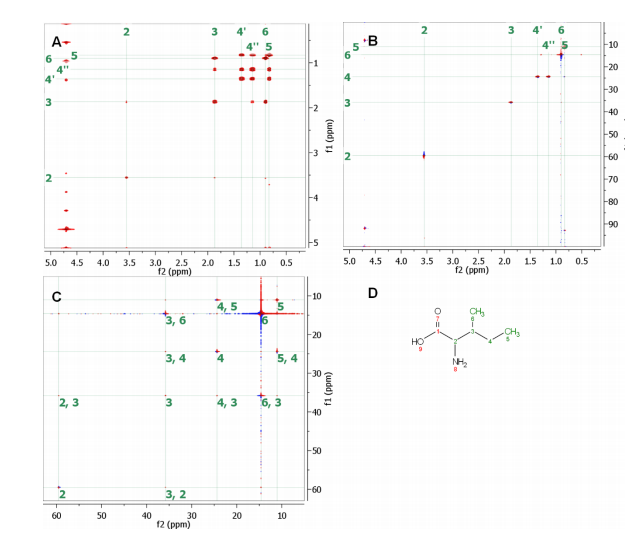NMR Data Evaluation: Review of Covariance Applications

| Title: | NMR Data Evaluation: Review of Covariance Applications |
| Authors: | Cobas, C |
| Date: | 06/19/2014 |
| Reference: | Published at Stan’s Library |
| Download link: | http://www.ebyte.it/library/docs/nmr14/2014_NMR_Cobas_Covariance.pdf |
Carlos Cobas has published a review of an important new NMR technique requiring special data evaluation.
Covariance NMR has attracted considerable interest in recent years and new applications of this technique aimed at paving the way forward to structure elucidation are appearing frequently in the scientific literature. For example, Zhang and coworkers used Covariance TOCSY NMR to improve the resolution of 2D spectra and simplify the task of mixtures analysis.1 The objectives of this technique are manifold, ranging from the resolution enhancement of homonuclear 2D spectra to the generation of new spectra that would require longer acquisition times by “combining” two spectra with a lower time “cost”.
Whilst the mathematical foundations and chemical applications are very well established (although growing) and described in the specialized literature in great detail, chemists without a solid background on NMR spectroscopy might have difficulties in understanding the particular jargon of Covariance NMR. It is the goal of this article to provide a very high level description of what Covariance NMR entails as well as giving practical hands-on advice on how to use the different Covariance NMR methods within Mnova NMR software.(A) COSY spectrum. (B) HSQC spectrum. Doubly indirect covariance experiment (C) allows
carbon-carbon connectivity of isoleucine to be derived (D). Assigned 13C-
13C cross-peaks in C show the
connections between vicinal carbons with protons attached of isoleucine carbons 2 to 6. (COSY and HSQC
spectra courtesy of R. Brüschweiler and F. Zhang)

